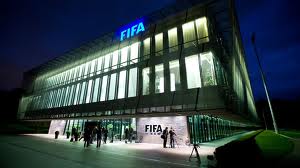By David Owen
August 28 – Gianni Infantino’s New FIFA may have enjoyed the odd commercial success, notably with esports, but it has failed to reignite the body’s value as a marketing vehicle for international corporations. This has been treading water since FIFA was engulfed by reputational issues in the final days of the Blatter era.
The world governing body’s newly-published 2019 annual report indicates that marketing was still struggling in comparison with other revenue streams as we moved into the first year of a new business cycle.
Revealing that 2019 revenue totalled $766 million, the document states that this “exceeded the budget by six per cent, thanks to increases in all revenue sources except marketing rights”.
At $165 million, revenue from marketing rights was “slightly below budget for the year”, but still five per cent up compared to the same period of the previous cycle, the report goes on.
Based on the detailed budget for 2019 set out in FIFA’s 2017 financial report, it seems to me that that adverb “slightly” is being asked to do an awful lot of work in the preceding sentence.
Projecting total revenue of $722 million – which is indeed six per cent less than the $766 million finally achieved – the budget puts the expected contribution of revenue from marketing rights at $231 million.
So the $165 million total appears to have undershot budget by $66 million, or a whopping 28.5 per cent.
As the new report states, it is at least somewhat higher than the restated figure of $157.2 million generated from marketing rights five years ago in 2015.
Admittedly, year one of FIFA’s standard four-year cycle is far from the most significant in commercial terms.
Under the organisation’s initial 2019-22 revenue budget, dating also from the 2017 financial report, marketing rights over the entire period were forecast to yield $1.885 billion.
In light of the Covid-19 pandemic, this has now been revised down to $1.766 billion.
That would represent an increase of not much more than six per cent from the $1.66 billion generated by marketing in 2015-18, which itself was only marginally higher than the $1.63 billion it produced in 2011-14 when Blatter was still in his pomp. In a world in which Apple has doubled its market capitalisation to around $2 trillion in about two years, that sequence is not exactly an example of explosive growth.
FIFA’s current roster of Partners consists of Adidas, Coca-Cola, Wanda, Hyundai/Kia Motors, Qatar Airways and Visa.
One of the areas where Infantino’s FIFA has, by contrast, shown impressive growth is employment.
According to the new annual report, the number of full-time employees at the end of 2019 was 947.
Given that the average number of employees in 2014 was 474, this means that FIFA’s headcount has almost exactly doubled in the space of about five years.
Personnel expenses, unsurprisingly, have rocketed too, from a restated $107.2 million in 2015 to $199.4 million in 2019.
The pandemic may well alter prevailing trends, but at this rate, the bill for staff over the full cycle could exceed $800 million.
Contact the writer of this story at moc.l1751526828labto1751526828ofdlr1751526828owedi1751526828sni@n1751526828ewo.d1751526828ivad1751526828

